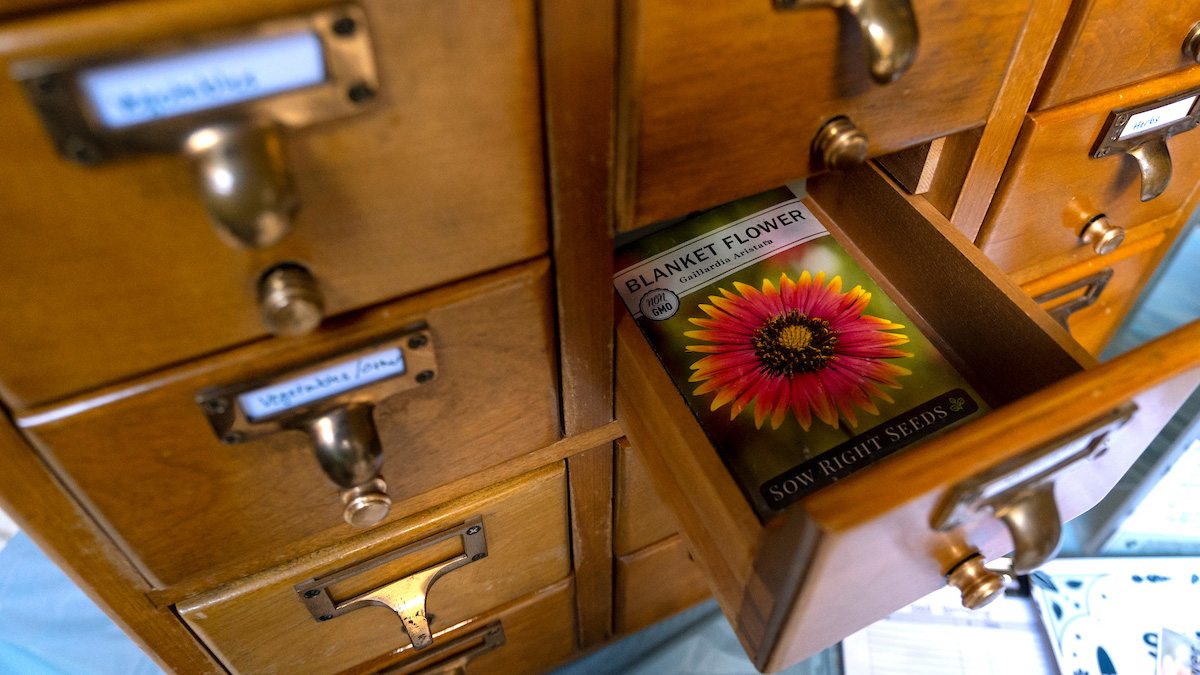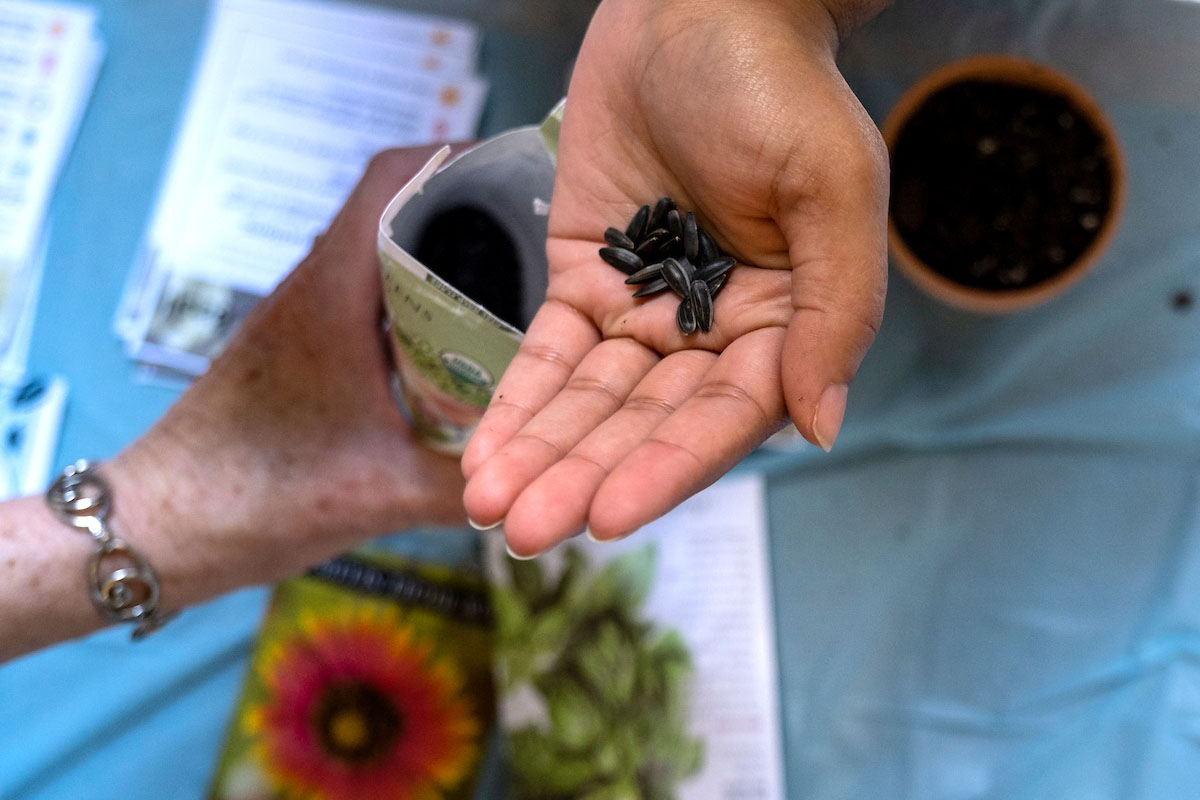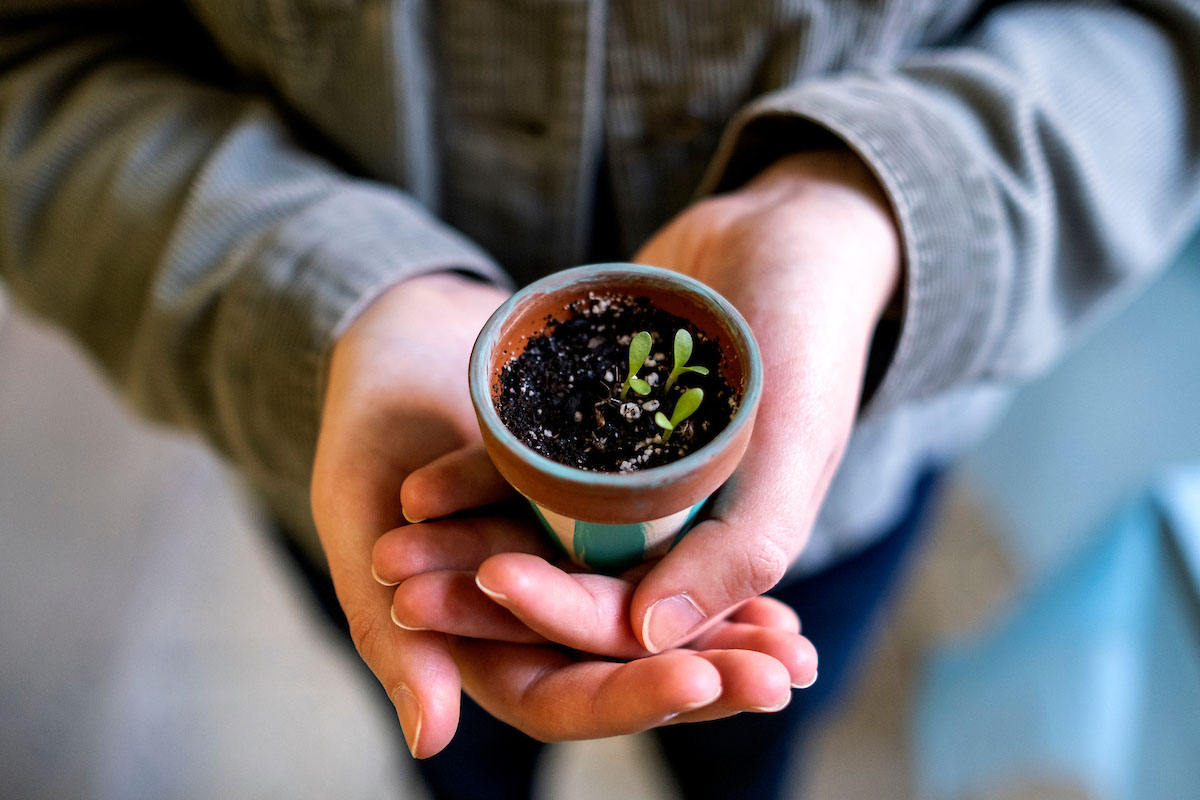Learning by growing
A new seed library in Kenan Science Library's makerspace has everything Tar Heels need to explore gardening or botany.

The University Libraries has added a new collection unlike anything in the other 9 million volumes that fill its stacks. Instead of books or historical documents, the materials in this new collection can be held in the palm of your hand.
Earlier this week, the Kenan Science Library unveiled its new seed library. The compact collection — kept in a repurposed library card catalog in the facility’s makerspace — consists of plant seeds and resources to help the Carolina community explore gardening or botany.
“The Kenan Science Library Makerspace Seed Library strives to provide users with the materials and informational resources to begin learning about plants and how they grow,” said Therese Triumph, interim head of Kenan Science Information Services. “This library fits within our makerspace because it highlights another method of learning by making.”

In all, Carolina’s new seed library features 35 varieties of plants for the community to grow. (Photo by Jon Gardiner/UNC-Chapel Hill)
The project was brought to life by UNC School of Information and Library Science master’s student Jordan Green, who works at the Kenan Science Library as a Carolina Academic Library Associate. The Tar Heel pitched the idea in 2020 and has spent months researching and preparing the collection.
“Its purpose is to lend out seeds to community members to take home and grow, with the hope they’re able to save some of the seeds from those plants they grow and return them back to the library’s collection,” Green said, noting that returning new seeds isn’t required.
Though she wasn’t a gardener herself when she began the project, the experience, Green said, allowed her to explore the gardening world while preparing for her future career as an academic librarian by creating a hands-on learning experience for Tar Heels.
“It was definitely a fun process doing the background research and reading about all the plants of North Carolina and all the seed libraries in the region — and around the country — that have been popping up,” she said. “There’s a really cool community around seed libraries and seed saving that was really fun to explore.”
Ultimately, Green decided to stock the library with plants native to North Carolina, heirloom plants and other open-pollinated herbs and flowers to support nearby pollinators. She also wanted plants that could be grown in pots, making the seed library accessible to undergraduates living in dorms or apartments.
“I hope that the seed library can be a hands-on educational resource for members of the UNC community that are interested in or beginning in botany, and I hope that we can provide the resources to help them get started,” Green said.

The Carolina community celebrated the launch of the seed library on March 2 with a pot decorating and planting event. (Photo by Jon Gardiner/UNC-Chapel Hill)
Green collected the seeds through funding from the Student Library Advisory Board and donations from the North Carolina State Extension’s Community Seed Library sponsored by the Orange County NC Master Gardener Volunteers. In all, Carolina’s new seed library features 35 varieties of plants for the community to grow.
In addition to envelopes of seeds, the library includes information on growing the plants and an online resource guide with frequently asked questions and further reading related to the seed library.
The art of botany may be a bit more low-tech than most of the tools surrounding the seed library in the makerspace, but the goal of the new collection is an extension of the same mission behind the electronic sets and virtual reality headsets.
“In the makerspace, we have a lot of tools and technology like our 3D printers and sewing machines that are meant to facilitate hands-on learning by doing,” Green said. “The seed library is another version of that — learning by growing.”
Learn more about the Kenan Science Library Makerspace Seed Library




